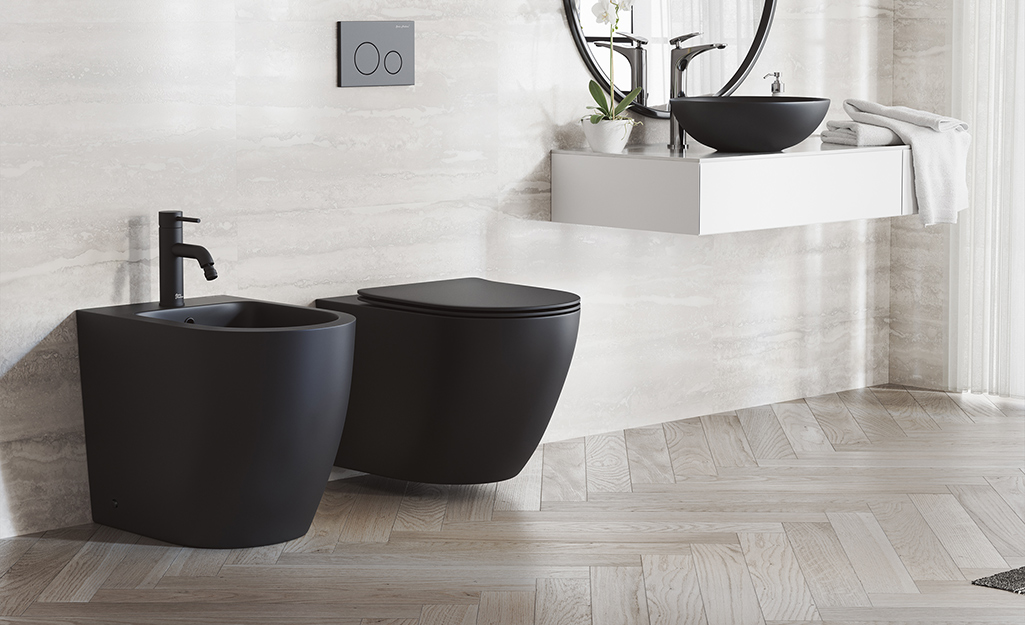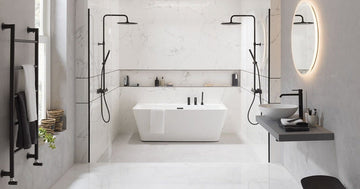As the world of bathroom technology advances, many homeowners find themselves at a crossroads: bidet vs smart toilet. Both options offer unique benefits and come with their own set of considerations. Before diving into the intricacies of each, it's important to first understand the difference between these two bathroom innovations. For those in the Industry QA sector, making the right choice can be crucial to ensuring quality and functionality in modern bathroom designs.

Understanding the Basics: What is a Bidet?
A bidet is a bathroom fixture designed to wash the user with water after using the toilet. Traditionally popular in Europe and Asia, bidets provide a more hygienic and eco-friendly alternative to toilet paper. They operate by directing a stream of water to cleanse the user, reducing the need for excessive paper usage and the environmental impact associated with it.
For those interested in sustainable design, bidets can play a crucial role in reducing water waste in bathrooms. In fact, the use of bidets aligns well with the growing trend towards eco-conscious bathroom solutions.
Smart Toilets: The Future of Bathroom Technology
Smart toilets represent the cutting edge of bathroom technology. They integrate advanced features such as heated seats, automatic flushing, and even air drying. Some smart toilets also come equipped with sensors to monitor and adjust water usage, making them a great option for those looking to conserve water.
These innovative features not only provide enhanced comfort and convenience but also promote better hygiene. For instance, touchless controls and self-cleaning functions minimize the spread of germs, making smart toilets an attractive option for both residential and commercial spaces.
Comparing the Benefits: Bidet vs Smart Toilet
When it comes to choosing between a bidet and a smart toilet, several factors should be considered:
- Hygiene: Both bidets and smart toilets offer superior hygiene compared to traditional toilets. However, the choice often comes down to personal preference and the specific features one values most.
- Water Conservation: While bidets are renowned for their water-saving capabilities, many smart toilets are designed with eco-friendly features that monitor and reduce water usage. To learn more about how smart toilets contribute to sustainability, check out the role of smart toilets in water conservation.
- Cost: The initial investment for a smart toilet can be higher than a bidet due to the advanced technology involved. However, the long-term savings on water bills and toilet paper can offset the initial cost.
Installation and Maintenance: What to Expect
Installation can vary greatly between bidets and smart toilets. A standalone bidet requires additional plumbing and space, whereas a bidet attachment is more straightforward to install. Smart toilets, on the other hand, may require professional installation due to their complex technology and electrical requirements.
Maintenance for both options is relatively low. Bidets are simple to clean and maintain, while smart toilets often come with self-cleaning functions that further reduce the need for manual cleaning. For more insights on maintaining your bathroom fixtures, explore these toilet design trends.
Design Considerations: Finding the Right Fit for Your Bathroom
When integrating a bidet or smart toilet into your bathroom, design is a key factor to consider. Both options come in a variety of styles and finishes, allowing you to choose one that complements your bathroom's aesthetic. From sleek, minimalist designs to more traditional looks, there's something for every taste.
For inspiration on how to incorporate these fixtures into your bathroom, take a look at these modern bathroom designs and discover new ways to enhance your space.
Conclusion: Making the Right Choice
Ultimately, the decision between a bidet and a smart toilet depends on your personal preferences, budget, and bathroom space. Both options offer significant benefits in terms of hygiene, water conservation, and design flexibility. By carefully weighing these factors, you can make an informed decision that meets your needs and enhances your bathroom experience.

FAQ
What are the main differences between a bidet and a smart toilet?
A bidet is primarily used for personal hygiene after using the toilet, while a smart toilet incorporates advanced features such as heated seats and automatic flushing. Both offer improved hygiene, but smart toilets also focus on comfort and convenience.
Are smart toilets worth the investment?
Smart toilets can be a worthwhile investment, especially for those who value convenience and are interested in eco-friendly practices. While the upfront cost is higher, the long-term savings on water and toilet paper can make them cost-effective.
Can I install a bidet in a small bathroom?
Yes, even in small bathrooms, you can install a bidet attachment, which is a space-saving option that fits onto your existing toilet. This allows you to enjoy the benefits of a bidet without requiring additional space for a standalone fixture.






